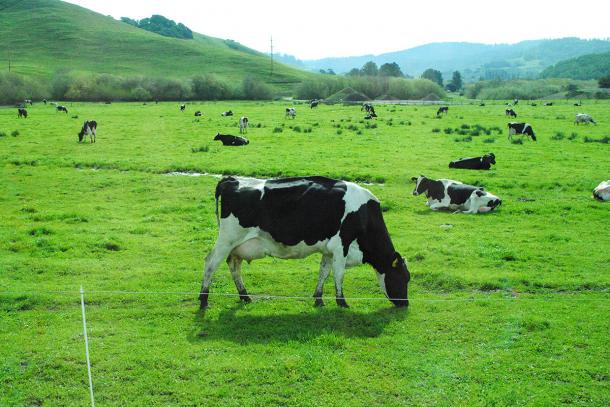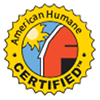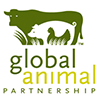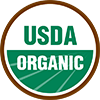Decoding Animal Welfare Labels
March 11, 2016

Pasture raised. Hormone free. All natural. With so many buzzwords, it’s hard to decipher labels on meat, eggs, and dairy products. Which ones are just greenwashing, and which ones can you trust?
Liberally used terms like “free-range” paint a bucolic picture that is far from the reality of today’s industrial farming system. Raising animals in crowded confinement is the standard practice in America because it’s efficient and profitable, but it’s also inhumane. As consumer demand for humane and sustainable animal products grows, labels featuring bold claims and happy animals frolicking in lush pasture have proliferated in the meat and dairy aisles, most without federal regulation.
For CUESA, humane means things like allowing animals to engage in the natural behaviors that are important to their wellbeing, and minimizing stress to the animals, from birth to slaughter. We’ve detailed specific practices in our Sustainability Frameworks, and we endeavor to partner with producers whose practices align with these values.
To help you decode the language in the farmers market or at the butcher counter, here’s a quick primer on some of the labels and terms you’ll see.
Certifications
Third-party certifications are the most transparent animal welfare labels on the market. In order for a product to bear one of these labels, the farm must be audited by an independent third party, often a nonprofit organization, and the farm’s practices must adhere to published standards. There are many animal welfare certification programs out there, with different emphases and varying degrees of rigor. Here are a few common ones you might see. For an in-depth comparison of each certifier’s standards, see this chart from the Animal Welfare Institute.
 Animal Welfare Approved: Applicable to meat, egg, and dairy products, this label is considered to have the highest animal welfare and environmental standards and is only available to independent family farms. Farms must provide animals with continual access to pasture or range and the opportunity to perform natural and instinctive behaviors essential to their health and well-being. Animal Welfare Approved also has a grassfed certification.
Animal Welfare Approved: Applicable to meat, egg, and dairy products, this label is considered to have the highest animal welfare and environmental standards and is only available to independent family farms. Farms must provide animals with continual access to pasture or range and the opportunity to perform natural and instinctive behaviors essential to their health and well-being. Animal Welfare Approved also has a grassfed certification.
 American Humane Certified: This program is the least stringent of the well-known animal welfare certifications, but it still requires more humane conditions than the industry standard. For example, it prohibits antibiotics in feed, but allows chickens to be housed in larger “enriched colony” cages and cattle to be raised in feedlots.
American Humane Certified: This program is the least stringent of the well-known animal welfare certifications, but it still requires more humane conditions than the industry standard. For example, it prohibits antibiotics in feed, but allows chickens to be housed in larger “enriched colony” cages and cattle to be raised in feedlots.
 Certified Humane Raised and Handled: This label has slightly more rigorous requirements than American Humane Certified, but not as strict as Animal Welfare Approved. For example, cages for hens are prohibited, but outdoor access is not required.
Certified Humane Raised and Handled: This label has slightly more rigorous requirements than American Humane Certified, but not as strict as Animal Welfare Approved. For example, cages for hens are prohibited, but outdoor access is not required.
 Global Animal Partnership: This label, developed in partnership with Whole Foods and sold through their stores, uses a five-step rating program that encourages improvement in animal welfare. Step one begins with no cages or crowding, step three requires outdoor access, step four certifies pasture-centered practices, and so on.
Global Animal Partnership: This label, developed in partnership with Whole Foods and sold through their stores, uses a five-step rating program that encourages improvement in animal welfare. Step one begins with no cages or crowding, step three requires outdoor access, step four certifies pasture-centered practices, and so on.
 USDA Certified Organic: Many people don’t realize that the National Organic Program also has animal care standards. The standards require that animals eat 100% organic feed, without antibiotics or hormones. Outdoor access is required and feedlot confinement is prohibited, but some humane handling practices are not defined.
USDA Certified Organic: Many people don’t realize that the National Organic Program also has animal care standards. The standards require that animals eat 100% organic feed, without antibiotics or hormones. Outdoor access is required and feedlot confinement is prohibited, but some humane handling practices are not defined.
 American Grassfed: Applicable only to ruminants (such as beef and lamb), these standards ensure that the animals have eaten nothing but grass and forage, were not raised in confinement, and have never been fed antibiotics or growth hormones. Meat that is labeled “grass-fed” is not necessarily certified.
American Grassfed: Applicable only to ruminants (such as beef and lamb), these standards ensure that the animals have eaten nothing but grass and forage, were not raised in confinement, and have never been fed antibiotics or growth hormones. Meat that is labeled “grass-fed” is not necessarily certified.
Terms and Definitions
The following terms are used both in third-party certifications and on their own. Some are regulated by the government; others are not. If the term is not verified or certified, dig deeper to ensure that the producer is living up to their claims.
Humane: Humane implies that animals were raised with compassion in a way that minimizes stress and allows them to engage in their natural behaviors. The term “humane” is otherwise unregulated, though numerous third-party certifications offer independent verification.
Cage-free: This unregulated term suggests that eggs are laid by hens permitted to roam in the henhouse (but not necessarily with any access to the outdoors).
Free-range or free-roaming: Suggests that the product came from an animal that was able to roam. The USDA only regulates the term for poultry, not beef, pork, or eggs. Meat birds are required to “have access to” the outdoors, but no amount of time or space is specified. Free-range hens are often kept indoors in large warehouses.
Pasture-raised: “Pasture raised” implies that meat or poultry comes from an animal that was raised outdoors on pasture. This term is sometimes used to differentiate eggs and poultry from “free-range” products coming from hens raised indoors. This term is unregulated and there is no standard definition. The Ferry Plaza Farmers Market only allows pasture-raised eggs to be sold by farmers in our market.
Grass-fed: This label means the ruminant animal (cattle, sheep, goat, or bison) was raised on a diet of fresh pasture during the growing season and stored grasses (hay or grass silage) in winter months or drought conditions. The USDA standard was revoked in 2016; it is now a voluntary claim. Several organizations offer private certifications.
Grass-finished: “Finished” animals have reached physical maturity and have developed fatty tissue. Some grass-fed animals, like most livestock in the US, are grain finished, or fed grains for an undetermined amount of time before slaughter. Other grass-fed animals are grass finished: they ate exclusively grasses throughout their whole lives.
Antibiotic-free: In conventional operations, antibiotics are routinely fed to cows, hogs, and chickens to promote faster growth and prevent diseases that run rampant in the cramped conditions in which food animals are kept. “No antibiotics” claims are regulated by the USDA and require ranchers to show documentation.
Hormone-free: Hormones are used in industrial farming of cows and sheep to increase growth rate or milk production. Some hormones are natural, some are synthetic, and some (like rBGH) are genetically engineered. Like “no antibiotics,” the “no hormones” claim is regulated by the USDA. Documentation must be shown, but the USDA does not routinely test. Hormone use in pork or poultry production is prohibited by the USDA.
Natural: USDA guidelines state that “natural” meat and poultry products can’t contain artificial ingredients or added color and must be only minimally processed; there is no verification system. The claim “natural” on other products is unregulated and generally meaningless.
Meet Your Producer
One of the best ways to cut through the noise is to know your farmer, so you have the opportunity to ask questions. While certified labels provide assurance, certification costs and the required documentation may be burdensome for smaller operations. So how do you know what to look for? Here are some basic questions you might ask your meat, egg, or dairy producer or purveyor:
Are your animal products certified by any third parties? Which ones?
How are the animals raised? Are they raised outdoors on pasture, or indoors?
Do the animals receive antibiotics, hormones, or other growth promoters?
What sort of diet are the animals fed?
These questions are just a starting point, and they’re only useful if you know how to interpret the answers. To go beyond this basic guide, we recommend checking out Sustainable Table’s Questions to Ask handouts.
To learn more about animal welfare terms, certifications, and practices, we suggest downloading the Animal Welfare Approved Food Labels Exposed phone app. or download the pdf. From welfare to taste to cost, there are many factors to consider, so you’ll need to figure out which ones are most important to you when you shop.
At CUESA, we promote ranchers and purveyors that adhere to the humane management practices outlined in our Sustainability Frameworks. Details about each producer can be found on their seller profile on our website, and you can visit the eggs, cheese, milk, and meat pages to dive deeper into specific products. And through farm tours, you can see how the animals are raised first-hand.
Got more questions? Stop by CUESA’s Food Shed tent for our “Decoding Food Labels” exhibit this month on Saturdays to learn more.
Thank you to CUESA Education Intern Jasmine Hormati for her research in this guide.
Topics: Animal welfare, Humane, Meat/poultry
